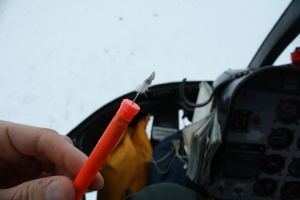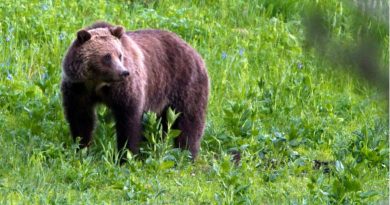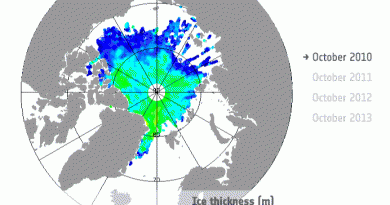Biologists wrap up Baffin Bay polar bear survey

The Nunavut government has wrapped up three years of fieldwork on Baffin Bay polar bears, and is preparing to release a new population estimate sometime next year.
Baffin Bay’s polar bears have drawn international attention. Past research suggested that the population may be in trouble, but many Inuit, like Jaypeetee Killiktee of Clyde River, disagree.
“The bears come, and they go,” Killiktee says. “Sometimes it’s less, sometimes it’s more. I know there’s a lot of bears around.”
Biologists have spent the last three autumns flying along Baffin Island’s east coast, looking for bears and using biopsy darts to collect DNA samples. The darts grab a small piece of hair and skin, then bounce off the bears — a less invasive procedure than tranquilizing and examining the animals. Many Inuit from Baffin communities, including Killiktee, joined in the fieldwork, helping biologists spot bears from a helicopter.
Now that the fieldwork is done, the research team will start analyzing the data to come up with a population estimate.They’ll also be using data collected by researchers in western Greenland, which is within the Baffin Bay population’s range.

“We recognize that it’s very important that we get this information out as quickly as possible,” says Stephen Atkinson, a polar bear biologist with the Nunavut government and the group’s lead investigator. “There are lots of people who are interested in the results, to start discussing the future of polar bear management in Baffin Bay.”
The goal is to have a final report — with recommendations — ready by the end of next year.
The numbers will have consequences. In 2010, the Nunavut government cut the number of polar bears that hunters can kill in the Baffin Bay region from 105 to 65.
The cut came after the federal government banned the export of fur, claws, skulls and other products from polar bears harvested in Baffin Bay, citing concerns about the bear population there.
The last survey of the Baffin Bear population took place 16 years ago.



